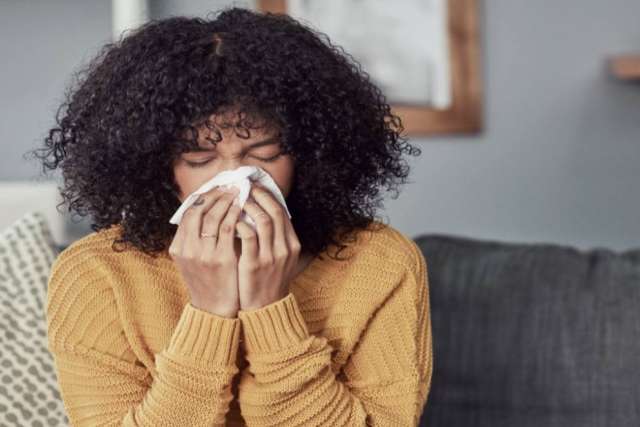Dear Doctors: I heard there’s finally a good answer for why people get more colds in winter than in the summer. The idea that it’s because we’re indoors more in winter never made sense because we’re indoors a lot in the summertime, too. Is there something about winter that viruses like?
Dear Reader: The United States is in the midst of what is being called a “tripledemic,” with not only cases of the flu surging nationwide, but also COVID-19 and respiratory syncytial virus, or RSV. And as happens each year, this increase in viral respiratory illness coincided with the onset of colder weather. The exact reason for this seasonal ebb and flow has long been a mystery and is a subject of ongoing debate.
You’re correct that a prominent theory focuses on the increased amount of time people spend indoors during this time of year. Respiratory illnesses during the warmer months are unusual enough that they are often labeled with the season. Get sick in July, and it’s a “summer cold” or the “summer flu.” However, infrequent though they may be, those summer bouts of the cold and the flu are proof that respiratory viruses are always with us. So, what’s going on?
The closer quarters of wintertime living do, in fact, contribute to an increase in viral transmission. However, that doesn’t explain the initial wave of illness that kicks off the start of the flu season each year. New research suggests the cause may be found within the human nose -- specifically, that colder temperatures have an adverse effect on the efficacy of the immune response that takes place inside of the nose.
The study, from researchers at Massachusetts Eye and Ear hospital and Northeastern University, appeared last December in the Journal of Allergy and Clinical Immunology. According to their findings, a crucial frontline immune response, which occurs within the nasal passages, becomes significantly less effective when the nose itself gets cold. At issue are microscopic structures known as extra-cellular vesicles, or EVs. In the presence of certain threats, including bacteria and some respiratory viruses, billions of EVs are released into the mucus of the nose. There, they surround and kill the invaders.
According to this new research, a decrease of just 9 degrees Fahrenheit in the tissue temperature of the nasal passages cut the number of EVs available to respond to a threat by more than 40%. The colder temperature also caused changes to the composition of the EVs that reduced their efficacy. The researchers theorize that all of this hampers the body’s ability to fight off respiratory viruses and leads to the annual winter surge.

We can’t change the weather, but we can protect ourselves. This includes an annual flu shot, which this year is proving to be a good match to the circulating virus. (And no, it’s not too late to get one.) The masks so many of us have stockpiled are also a useful tool. Not only do they offer a physical barrier against the airborne droplets that can carry viral particles, but they also create a warm microclimate. This can help keep the nose’s immune defenses in fighting form.
(Send your questions to [email protected], or write: Ask the Doctors, c/o UCLA Health Sciences Media Relations, 10960 Wilshire Blvd., Suite 1955, Los Angeles, CA, 90024. Owing to the volume of mail, personal replies cannot be provided.)





